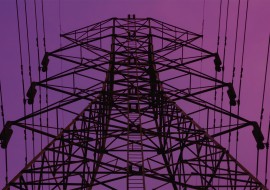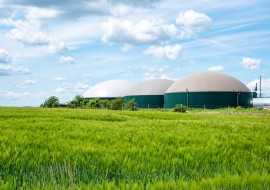The climate crisis demands urgent, bold action. It threatens our global economy, our health and safety, and the ecosystems on which we depend. It disproportionately harms developing nations, low-income communities, and communities of color.
Energy efficiency is critical to solving the climate crisis. In most cases, efficiency measures have proven to be the most cost-effective way to address climate change while reducing energy waste, saving money, and affordably expanding the use of renewable energy resources. Since ACEEE’s founding in 1980, efficiency has halved energy use relative to the size of the U.S. economy, delivering more than $2,000 in annual savings per person.
It is vital that we include energy efficiency policies in climate legislation. Utility energy efficiency targets, appliance and vehicle standards, building energy codes, and land use planning inducements should all be among the basic elements of any federal climate bill.
The urgency of the climate crisis calls for the global community to mobilize at a pace and scale unlike we have ever seen before. ACEEE’s research helps outline the path forward. We have identified efficiency policies and programs that can halve energy use and emissions by 2050, getting us halfway to U.S. climate goals. But to avoid the worst climate impacts, we need massive emission cuts this decade.
In our Call to Action, we commit to lead efforts and collaborate with partners to achieve these goals by 2030:
- Industry: Reduce industrial GHG emissions by a third relative to 2019; ensure half of U.S. manufacturing facilities use strategic energy management.
- Transportation: Increase fuel efficiency of new freight and passenger vehicles by at least 50% relative to 2020; ensure electric vehicles account for 50% of vehicle sales; decrease passenger and freight vehicle miles by 20% and 30%, respectively, relative to 2019.
- Buildings/Affordable Housing: Retrofit one-fourth of existing homes and buildings and ensure one-fourth of new construction is net-zero-energy and carbon neutral; ensure one-third of eligible low-income households are served by a whole-home energy efficiency program.
- Power Sector: Achieve at least 20% electric efficiency savings by using energy efficiency and demand flexibility as first-line resources; ensure grid has 80% carbon-free electricity in at least 30 states.
We know energy efficiency can get us halfway to U.S. climate goals, but we cannot get there without robust investments in energy-efficient appliances, buildings, vehicles, transit, and industrial plants. ACEEE has created the Halfway There Fund to give us the flexibility to innovate, experiment, and fund the transformation needed for a clean energy future.
Highlighted Resources:






